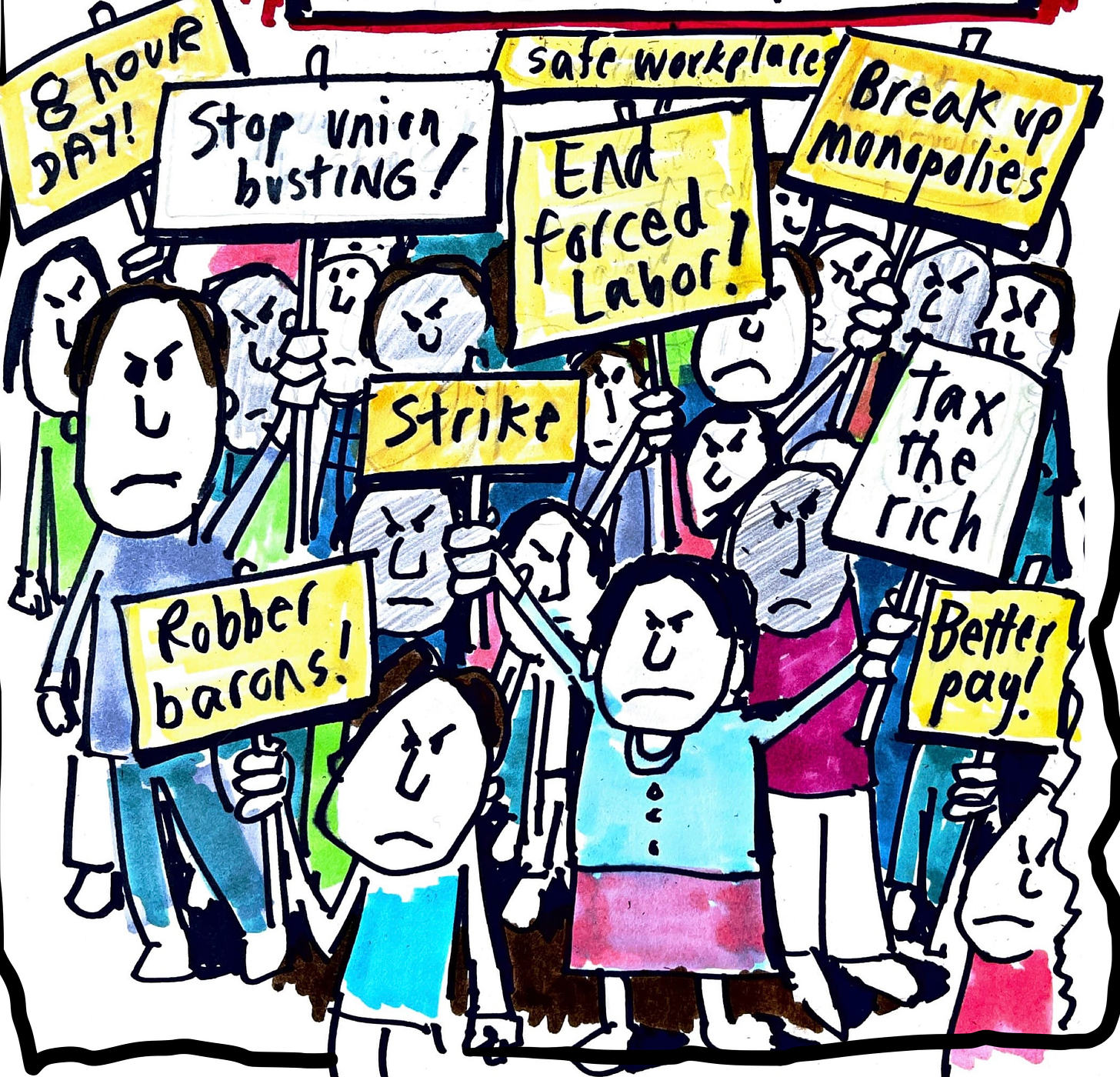For Labor Day: My "we-they" test for good places to work
Why worker empowerment is good for everyone -- not just the workers
Yesterday I went into a local Starbucks and asked the barista behind the counter a simple question: “How is it to work here?”
He was understandably cautious in answering me. After all, I could have been a corporate stooge (Starbucks is doing whatever it can to bust unions, including firing workers who appear to be disgruntled and may be trying to organize a union).
Then he said, reluctantly, “they treat us okay.”
“They.” That was the key word.
In honor of Labor Day, I want to give you a simple way to test for a good workplace. I came up with it years ago when as secretary of labor I visited workplaces all over America.
I call it the “we-they” test.
Ask a front-line worker a general question like “how is it work here?” or “how’s your job?” or “how would you describe this workplace?”
Then listen for the pronoun. If workers describe the company as "they" or "them," it’s a tipoff that workers regard the company and its executives as being on a different planet.
If workers describe the company as "we" or "us," the company instills a sense of pride and ownership in its workers.
Even a statement like "they aim for high quality here" suggests a workplace where employees regard the company and its top executives as being on the other side of a great divide.
Over the years, I’ve discovered that “we” companies achieve higher levels of quality, productivity and service than “they” companies.
I could give you many examples, but let me offer the L-S Electro-Galvanizing Co. in Cleveland — at the heart of the rust belt.
L-S passed the “we” test with ease. Every front-line worker I talked with told me how "we" were meeting the competition, how "our" company was succeeding.
L-S Electro-Galvanizing won awards for quality. Its customers were loyal, and its profits were mounting. Why the success? The company's equipment for putting zinc coatings on cold-rolled steel was available to all competitors (including those abroad with cheaper labor).
L-S Electro-Galvanizing's secret was its workers, who were constantly discovering better ways to use their equipment and serve their customers. The galvanized steel emerging from the factory was consistently high quality, tailored exactly to customer specifications and sold at a competitive price.
L-S’s workplace was organized from the bottom up. When I visited, I couldn’t tell managers from employees. All wore the same uniforms, parked in the same parking lots, ate in the same cafeteria. Worker committees did the hiring, decided on pay scales linked to levels of skill, and set production targets. They rotated jobs, so that every worker gained knowledge of the entire system. More than 10 percent of payroll was spent on training. And jobs were secure. Even during the recession, when its customers were scaling back, the company kept everyone on board.
All prospered together when the company did well. Workers received gain-sharing bonuses based on plant productivity and profit-sharing bonuses based on company performance. Almost no one ever quit.
And L-S was unionized.
That’s been my experience, too: As odd as it may seem, unionized workers are more likely to use the “we” pronoun than non-unionized. That’s probably because unionized workers have a voice. They have more security. They’re paid better. So they’re not continuously at war with management. Workers and managers have to get along.
By contrast, Starbucks has consistently failed my “we” test. Its workers have no sense of ownership or control. Top executives regards them as replaceable parts. All decisions come from the top. The company’s militant anti-unionism is a consequence of this culture.
Why aren't all workplaces “we” workplaces? Because top executives don’t want to give up control. They don’t want to entrust front-line workers with day-to-day decisions. Meanwhile, America's front-line workers feel bruised and beaten by years of promises unkept, real wages and benefits cut, and jobs eliminated. Many of them were dubbed “essential” during the pandemic — but they continue to be treated like shit.
On this Labor Day, let’s be clear: Worker empowerment is good for everyone, not just workers.




This is such an important insight. If business schools, leadership training programs, even the Davos gatherings, would acknowledge this and implement it, think how much better off we would all be. It might even heal the them vs us attitude which is destroying American society.
Thank You Mr Reich.
The most important part of your article was the following :
L-S’s workplace was organized from the bottom up. When I visited, I couldn’t tell managers from employees. All wore the same uniforms, parked in the same parking lots, ate in the same cafeteria. Worker committees did the hiring, decided on pay scales linked to levels of skill, and set production targets. They rotated jobs, so that every worker gained knowledge of the entire system.
If only we could only get our Government to follow suit!! Income inequality and lack of respect is our greatest divider in our country.